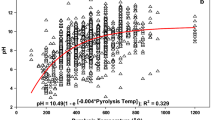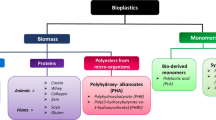Abstract
Deterioration in mechano-chemical properties due to biodegradation of prepared high-density polyethylene and jute eco-friendly polymer composites in soil and pure microbial culture was investigated through a programmed experimental design. The composite was prepared by compression molding process and then subjected to biodegradation. The biodegradation process was studied using face-centered central composite experimental design protocol and the model equations were formulated to assess the effects of jute fiber loading and treatment time on biodegradation (expressed as percentage loss in composite weight and tensile strength) of the composite. The optimal process conditions corresponding to maximum biodegradation were evaluated for both the media using response surface methodology. The maximum weight losses were 25.8924 % for soil medium and 12.4167 % for pure culture medium at 30 wt% jute fiber loading and 6 months of treatment time. At the derived optimal conditions, the effects of biodegradation were also manifested as 84.2621 and 70.9842 % losses in the tensile strength in soil and pure culture media, respectively. The present study, thus, demonstrates that HDPE/jute composite polymer can be appreciably biodegradable and the extent of biodegradation is more pronounced in soil medium compared to pure microbial culture. The analyses of the evolution of chemical composition and microstructure of the composite before and after biodegradation were performed through Fourier transform infrared spectroscopy (FTIR) and scanning electron microscopy. FTIR spectra indicated significant changes in chemical composition due to biodegradation, while the ruptured structure of the treated composite revealed notable changes in the morphology due to biodegradation.







Similar content being viewed by others
References
Mohanty AK, Misra M, Hinrichsen G (2000) Biofibres, biodegradable polymers and biocomposites: an overview. Macromol Mater Eng 276–277:1–24
Ku H, Wang H, Pattarachaiyakoop N, Trada M (2011) A review on the tensile properties of natural fiber reinforced polymer composites. Compos Part B 42:856–873
Joshi SV, Drazel LT, Mohanty AK, Arora S (2005) Are natural fiber composites environmentally superior to glass fiber reinforced composites? Compos Part A 35:371–376
De Velde KV, Kickens P (2002) Biopolymers: overview of several properties and consequences on their applications. Polym Test 21:433–442
Akil HM, Omar MF, Mazuki AAM, Safiee S, Ishak ZAM, Bakar AA (2011) Kenaf fiber reinforced composites: a review. Mater Des 32:4107–4121
Goriparthi BK, Suman KNS, Nalluri RM (2012) Processing of jute fiber reinforced hybrid biocomposites based on polylactide/polycaprolactone blends. Polym Compos 33:237–244
Mohanty S, Nayak SK (2006) Mechanical and rheological characterization of treated Jute/HDPE composites with a different morphology. J Reinf Plast Compos 25:1419–1439
Feng D, Caulfield DF, Sanadi AR (2001) Effect of compatibilizer on the structure-property relationships of kenaf-fiber/polypropylene composites. Polym Compos 22:506–517
Herreva-Franco PJ, Valadez-Gonzalez A (2005) A study of the mechanical properties of short natural fiber reinforced composites. Compos B: Eng 36:597–608
De Vries RP, Visser J (2001) Aspergillus enzymes involved in degradation of plant cell wall polysaccharides. Microbiol Mol Biol Rev 65:497–522
Ebringerova A, Hromadkova Z, Heinze T (2005) Hemicellul Adv Polym Sci 186:1–67
Singh B, Sharma N (2008) Mechanistic implications of plastic degradation. Polym Degrad Stab 93:561–584
Shiqaki T, Sugano W, Nakanishi A, Tateda M, Ike M, Fujita M (2004) The degradability of biodegradable plastics in aerobic and anaerobic waste land fill model reactors. Chemosphere 54:225–233
Abou-Zeid DM, Muller RJ, Deckwer WD (2001) Degradation of natural and synthetic polyesters under anaerobic conditions. J Biotechnol 86:113–126
Gupta AK, Rana SK, Deopura BL (2003) Crystallization behavior of high-density polyethylene/linear low-density polyethylene blends. J Appl Polym Sci 44:719–726
Ray D, Sarkar BK, Rana AK, Bose NR (2001) Effect of alkali treated jute fibers on the composite property. Bull Mater Sci 24:129–135
Ismail H, Abdullah AH, Bakar AA (2010) Kenaf core reinforced high density polyethylene/soya powder composite, the effects of filler loading and compatibilizer. J Reinf Plast Compos 29:2489–2497
Adhikary KB, Pang S, Staiger MP (2008) Dimensional stability and mechanical behavior of wood–plastic composites based on recycled and virgin high-density polyethylene (HDPE). Compos B 39:807–815
Chakraborty R, Bera M, Mukhopadhyay P, Bhattacharya P (2011) Prediction of optimal conditions of infrared assisted freeze-drying of aloe vera (Aloe barbadensis) using response surface methodology. Sep Purif Technol 80:375–384
Bhatti MS, Reddy RS, Thukral AK (2009) Electrocoagulation removal of Cr(VI) from simulated waste water using response surface methodology. J Hazard Mater 172:839–846
Hai MN, Byung S, Lee S (2009) Effect of NaOH treatments on jute and coir fiber polypropylene composite. Adv Compos Mater 18:197–208
Mohanty S, Verma SK, Nayak SK (2006) Dynamic mechanical and thermal properties of MAPE treated jute/HDPE composites. Compos Sci Technol 66:538–547
John ZL, Negulescu II, Qinglin W (2005) Maleated wood-fiber/high density-polyethylene composites: coupling mechanisms and interfacial characterization. Compos Interface 12:125–140
Mwaikambo LY, Ansell MP (2002) Chemical modification of hemp, sisal, jute and kapok fibers by alkalization. J Appl Polym Sci 84:2222–2234
Author information
Authors and Affiliations
Corresponding author
Rights and permissions
About this article
Cite this article
Chaudhuri, S., Chakraborty, R. & Bhattacharya, P. Optimization of biodegradation of natural fiber (Chorchorus capsularis): HDPE composite using response surface methodology. Iran Polym J 22, 865–875 (2013). https://doi.org/10.1007/s13726-013-0185-8
Received:
Accepted:
Published:
Issue Date:
DOI: https://doi.org/10.1007/s13726-013-0185-8




